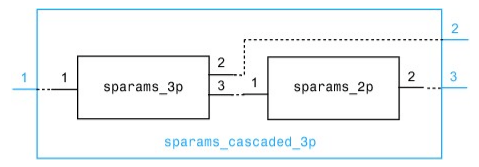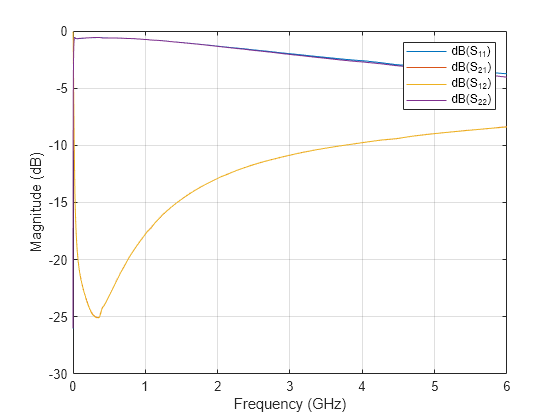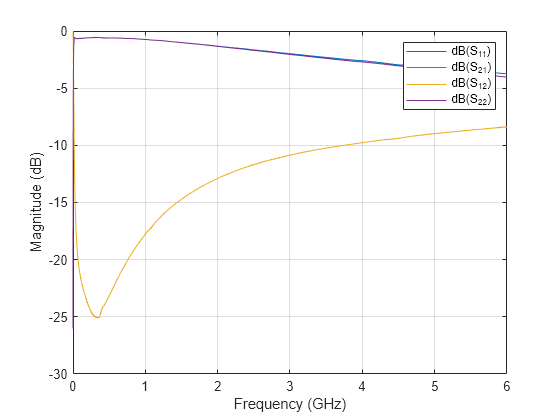cascadesparams
Combine S-parameters to form cascade network
Syntax
Description
s_params=
cascadesparams(s1_params,s2_params,...,sk_params)
Note
The cascadesparams function uses ABCD-parameters.
Alternatively, one can use S-parameters and ABCD-parameters (or
T-parameters) to cascade S-parameters together by hand (assuming
identical frequencies)
s_params=
cascadesparams(___,Kconn)Kconn. Use this option with
the input arguments in the previous syntax.
hs=
cascadesparams(hs1,hs2,...,hsk)
Examples
Input Arguments
More About
Version History
Introduced in R2008a
See Also
deembedsparams | s2t | t2s | snp2smp | rfckt.cascade





